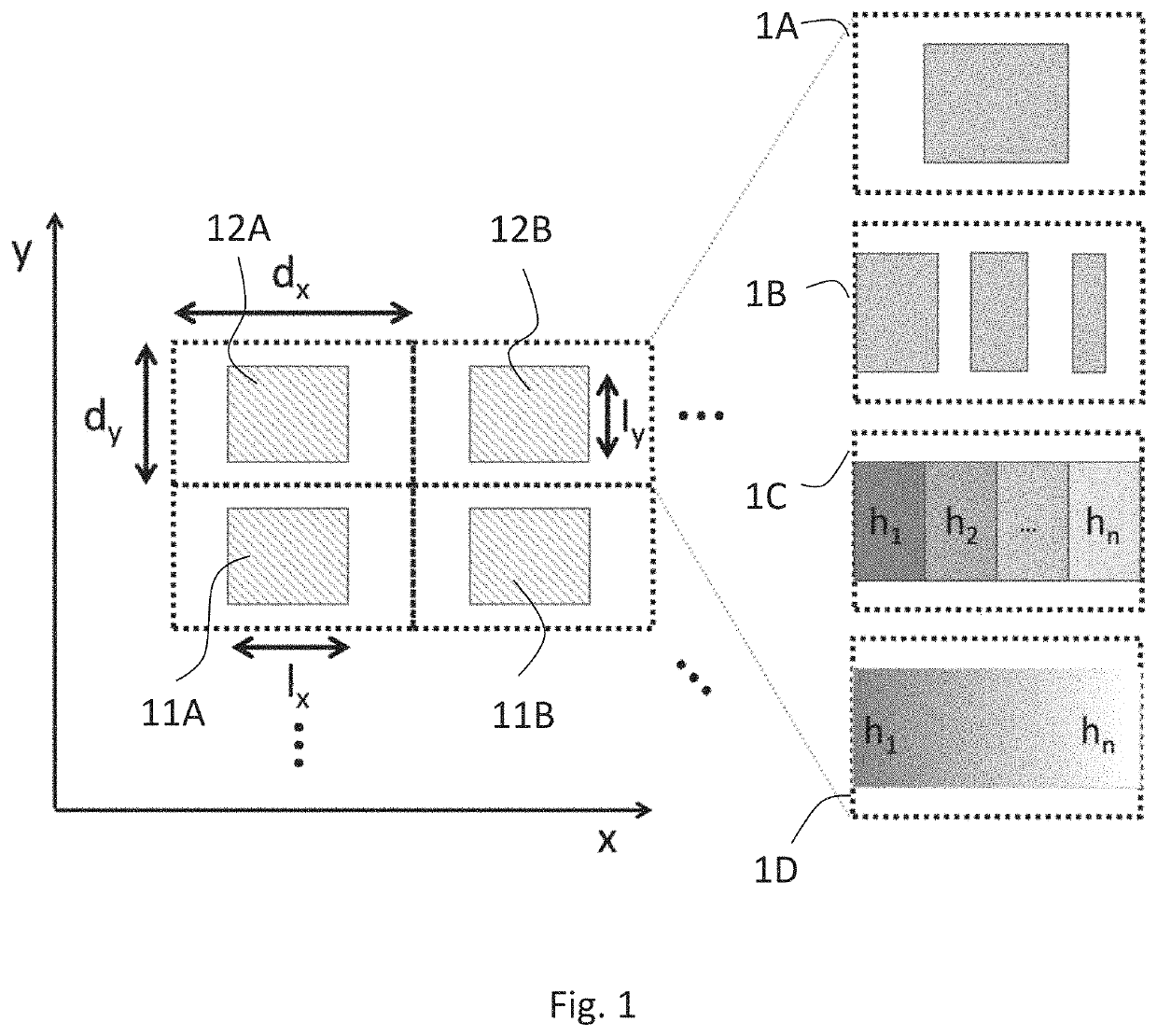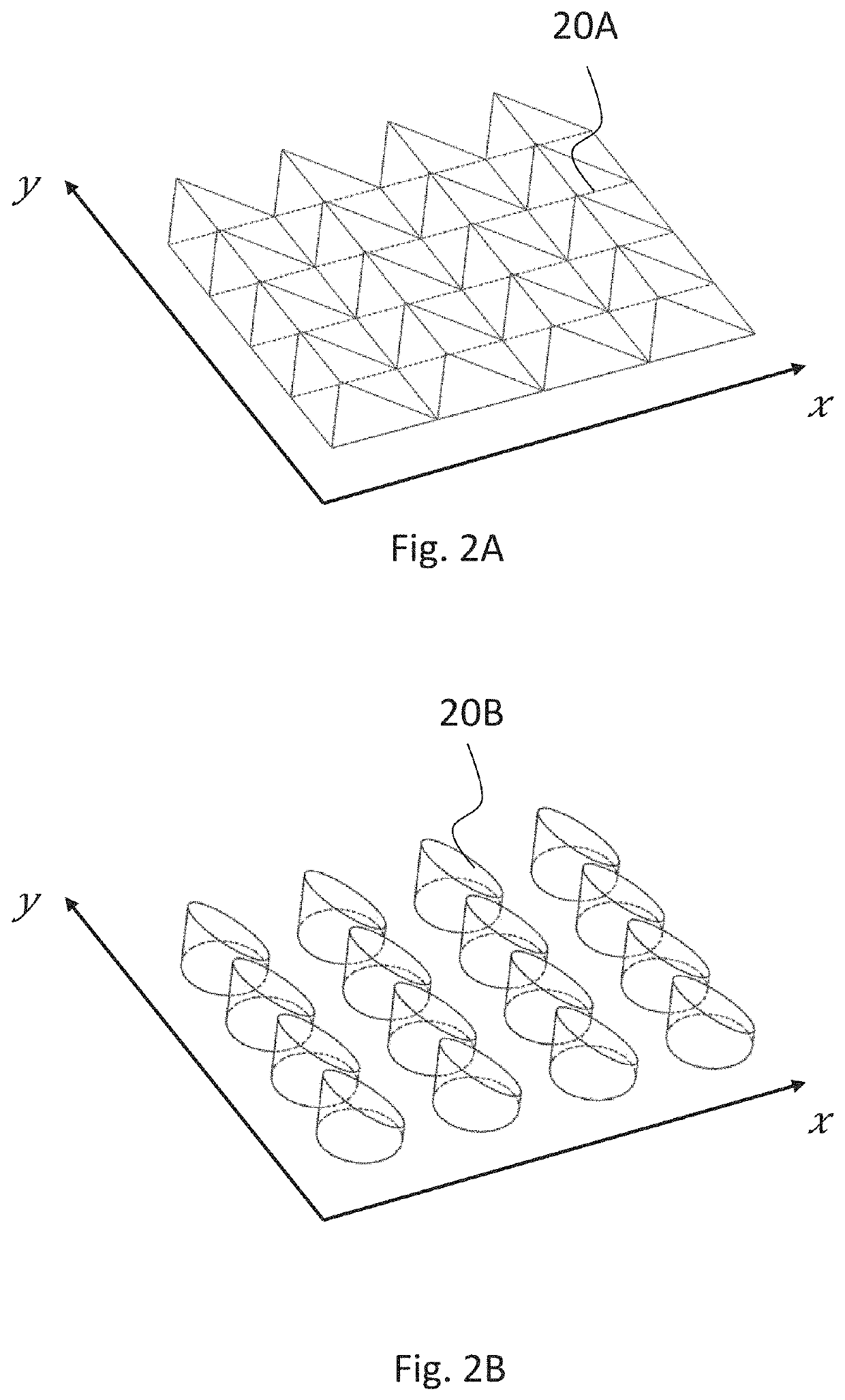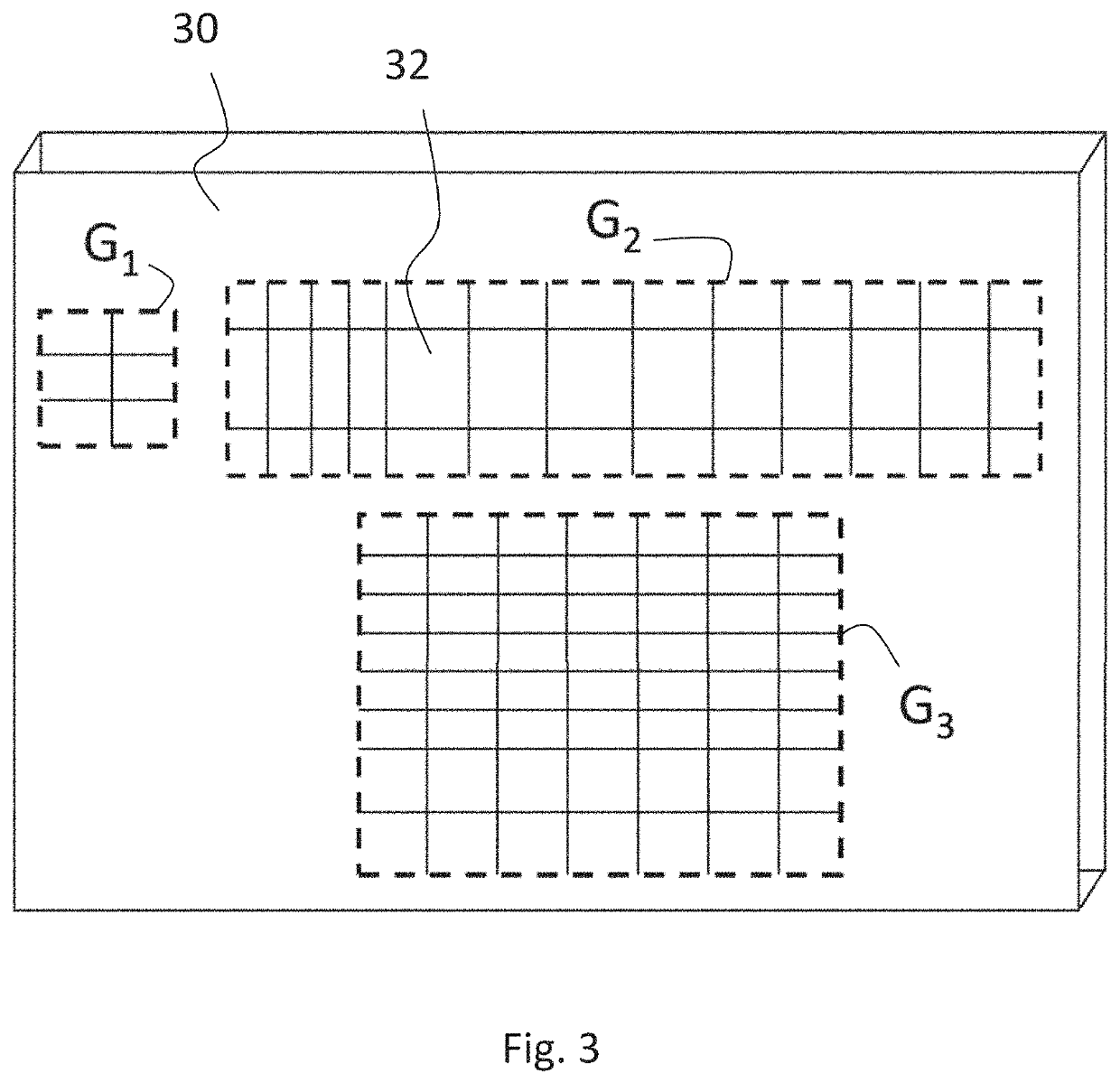Diffractive grating with variable diffraction efficiency and method for displaying an image
a technology of diffractive gratings and diffraction efficiency, which is applied in the field of diffractive gratings, can solve the problems of low yield of this process, high optimization and complex processing of materials, and difficult fabrication of micro- and nanostructures with varying heights on the same substrate, and achieve the effect of optimizing the optical performance of optical systems and modulating the diffraction efficiency of gratings
- Summary
- Abstract
- Description
- Claims
- Application Information
AI Technical Summary
Benefits of technology
Problems solved by technology
Method used
Image
Examples
Embodiment Construction
Definitions
[0036]“First direction” and “primary direction” refer to the direction of the grating in which the actual diffraction takes place in the particular zone concerned, i.e. the direction in which the grating pattern periodicity is in the optical diffractive range.
[0037]“Second direction” and “secondary direction” refer to the sub-wavelength periodicity direction of the grating pattern used for diffraction efficiency modulation.
[0038]“Lateral” and “in-plane” refer to the plane defined by the first direction and the second direction. Typically, this corresponds to the plane of a planar substrate the grating is manufactured on. “Normal” direction refers to the direction perpendicular to the lateral plane.
[0039]The term “zone” (like in “first zone” and “second zone”) refers to a region of the grating in the lateral plane, the region having the characteristics, in particular sub-wavelength modulation characteristics, referred to in each case. Typically, the zones are discrete, whe...
PUM
| Property | Measurement | Unit |
|---|---|---|
| area | aaaaa | aaaaa |
| area | aaaaa | aaaaa |
| transmittance | aaaaa | aaaaa |
Abstract
Description
Claims
Application Information
 Login to View More
Login to View More - R&D
- Intellectual Property
- Life Sciences
- Materials
- Tech Scout
- Unparalleled Data Quality
- Higher Quality Content
- 60% Fewer Hallucinations
Browse by: Latest US Patents, China's latest patents, Technical Efficacy Thesaurus, Application Domain, Technology Topic, Popular Technical Reports.
© 2025 PatSnap. All rights reserved.Legal|Privacy policy|Modern Slavery Act Transparency Statement|Sitemap|About US| Contact US: help@patsnap.com



